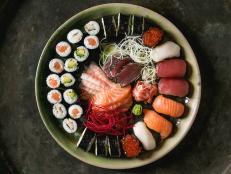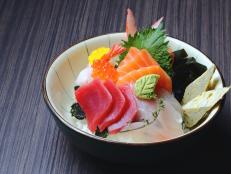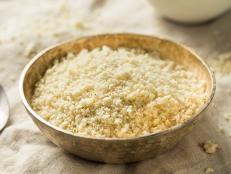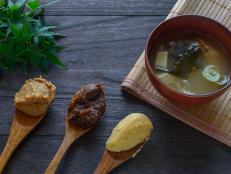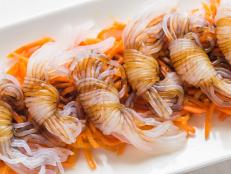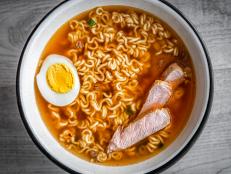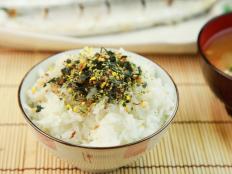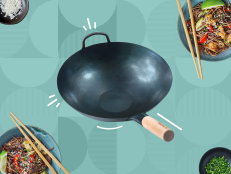What Is Edamame?
Plus exactly how to buy, prepare and eat it.
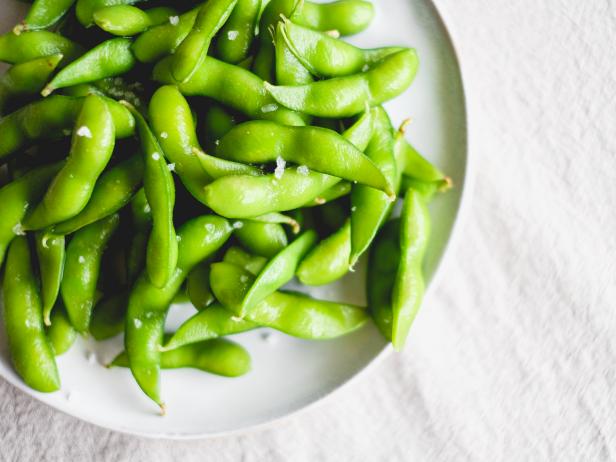
Robynne O'Halloran
By Layla Khoury-Hanold for Food Network Kitchen
Layla Khoury-Hanold is a contributor at Food Network.
Perhaps you’ve seen edamame on sushi restaurant menus or maybe you’ve discovered its versatility as a plant-based protein. For more info, we consulted Pascale Yamashita, a recipe developer, food stylist, food photographer and avid food lover based in Japan.

Damar Muharram / EyeEm/Getty Images
What Is Edamame?
Edamame is a whole, light green soybean that is harvested before ripening. Edamame pods have a fuzzy exterior while the beans inside are smooth and tender. The most common way to prepare edamame is to boil them in a full pot of salted water. Prepared this way, edamame are enjoyed as snack at home or at izakaya, where edamame are served with beer or sake. “Edamame are also enjoyed deep-fried, braised, pickled, grilled, stir-fried, made into soup, mashed to make sweets, or crushed and tossed in sauces,” Yamashita says. In the U.S., they're typically sold fresh, in their pods, or shucked, bagged and frozen.
In Japan, you can buy frozen edamame beans/pods, fresh pods, packed edamame beans or edamame pods on branch, which are freshest. Edamame that can be categorized into two groups: one that is harvested in the fall and the other that is harvested in the summer. In Japanese, eda means branch and mame means beans. “Boiled whole branches with pods were regarded as a fast food in the olden days. People had them with them while traveling and could snack on them while walking to their destination,” Yamashita says. “Thus, it was called branch beans or beans on branch.”
Edamame Pronunciation
The correct pronunciation of edamame is eh-duh-maa-may.
Is Edamame a Vegetable?
Technically, soybeans are part of the Fabaceae or legume family, similar to beans and peas. Yamashita says that edamame is commonly regarded as a vegetable in Japan.
Is Edamame Soy?
Yes, edamame are whole soybeans that are harvested before maturation.

Lauren Burke/Getty Images
How to Prepare Edamame
Yamashita shares a simple method for preparing salt-boiled edamame, which is how she makes them at home.
- Clean the edamame: First, scrub edamame pods with salt to get rid of the fuzz, then rinse under water.
- Boil water: Bring a full pot of salted water to a boil.
- Cook the edamame: Boil the edamame in the salted, boiling water. The cooking time will vary depending on the quantity of pods and size of the beans inside. Yamashita recommends starting to taste the beans between 2 to 5 minutes of boiling time.
- Drain and salt the edamame: Once the edamame pods have finished cooking, drain the edamame in a sieve or colander and spread them on a kitchen towel. Sprinkle with salt.
- Cool and serve: Allow the edamame to cool, then serve.

PamelaJoeMcFarlane/Getty Images
How to Eat Edamame
Edamame beans are squeezed out of their pods while the pods are discarded. Yamashita says that edamame can be eaten with chopsticks or hands if you’re in a more casual place. “Hold the longer side of the edamame (either with fingers/chopsticks) and place on your lips. Pop the beans in your mouth using your fingers and teeth, as needed,” she instructs.
Edamame Nutrition
Edamame is a nutritious source of plant-based protein. Each heaping cup of edamame (or 1/2 cup of shelled soybeans) contains 11 grams of protein, 9 grams of fiber, 10% of your Daily Value for vitamin C and iron and 8% for vitamin A.
Edamame Recipes
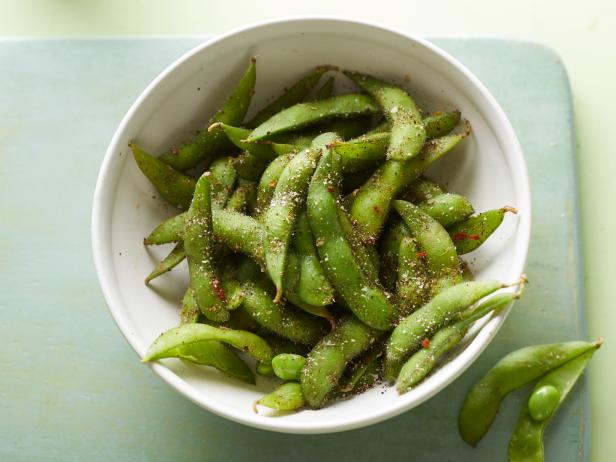
Stephen Johnson, 2014, Television Food Network, G.P. All Rights Reserved
For this twist on a popular Japanese snack, edamame pods are boiled in salted water until tender, drained and patted dry, then tossed with a seasoning salt mixture spiked with chili powder, red pepper flakes and oregano.

Ryan Dausch
Frozen, shelled edamame cook up in a flash and add a hefty dose of protein to this vibrant zucchini and carrot salad. A lemony dressing pulls it all together.

This riff on hummus swaps in edamame for chickpeas, giving the protein-packed dip a pretty green hue, and pulls in cumin and coriander for an extra pop of seasoning.
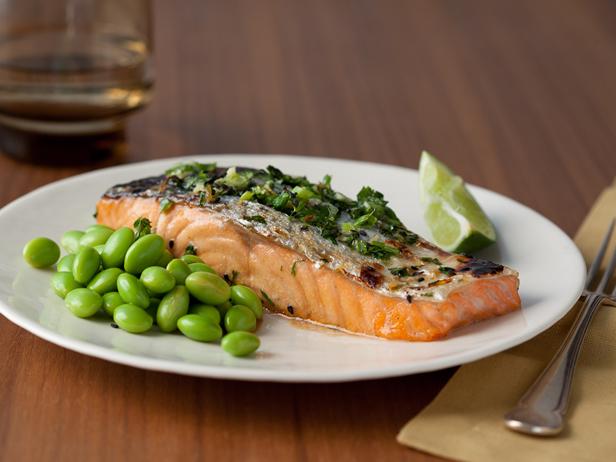
Edamame make for an easy, flavorful side, particularly when you start with frozen, shelled edamame. Paired with herb-infused salmon, it rounds out a healthful, satisfying supper.

Christopher Testani
Japanese pantry essentials, including soba, soy sauce and sesame oil, helps pull together a stir-fry studded with shrimp and edamame. It all adds up to a quick and filling supper in under 30 minutes.
Related Links:






















